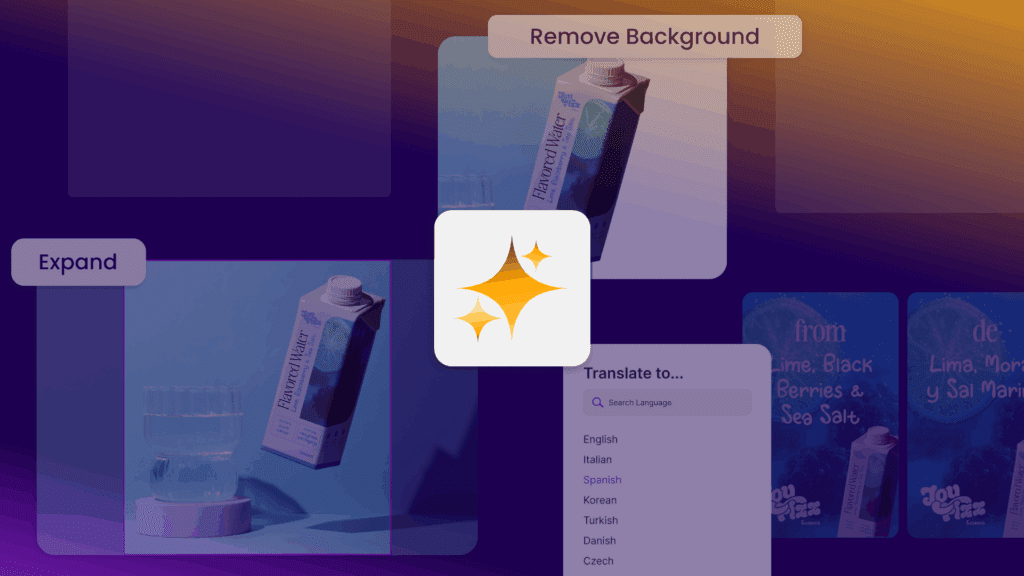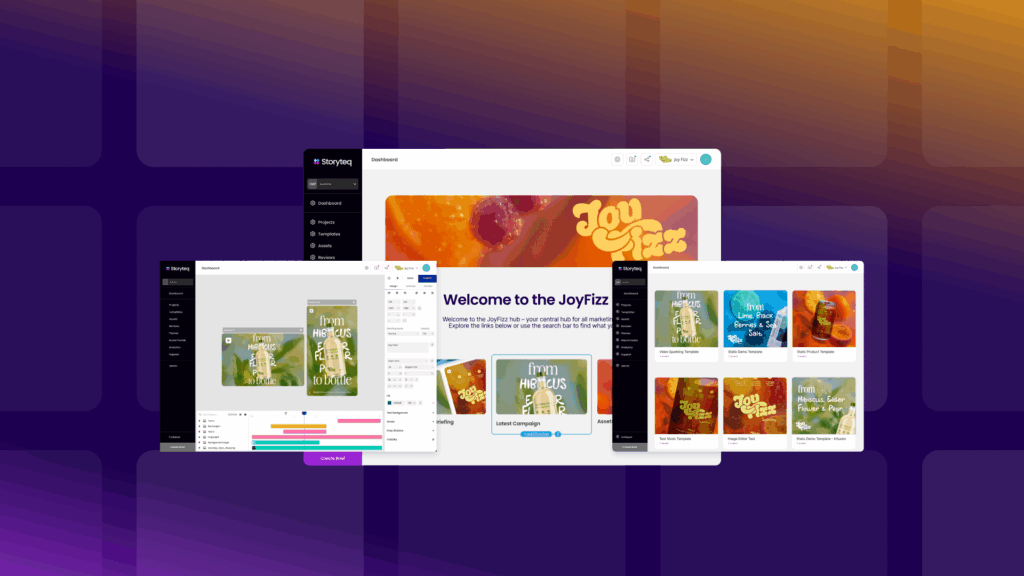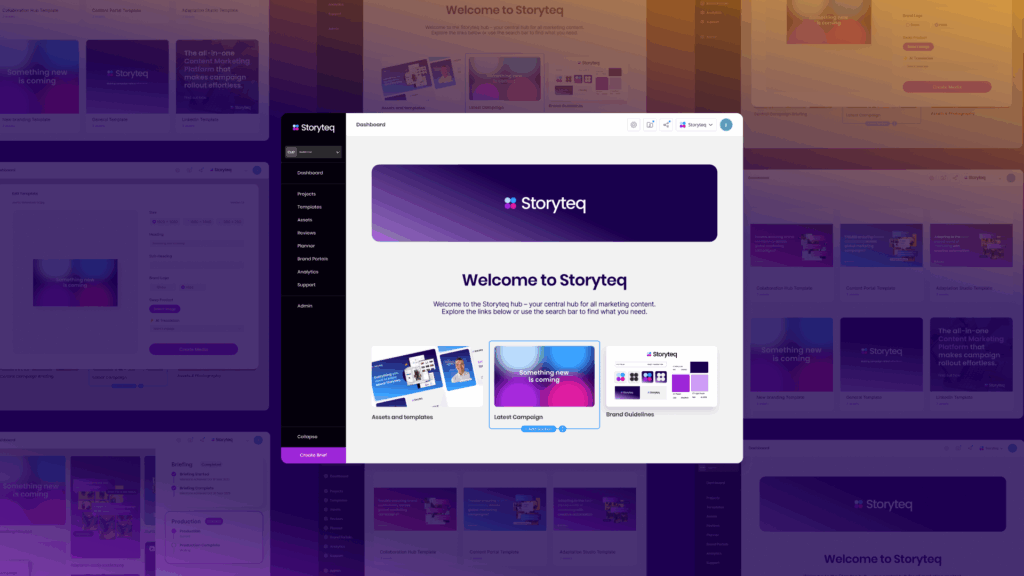Content marketing automation helps brands create, manage, and distribute content efficiently by streamlining repetitive tasks and workflows. Growing brands use these tools to scale content production, maintain consistency, and deliver personalized experiences across multiple channels without proportionally increasing resources. The right automation platform serves as the backbone for marketing growth, helping you overcome bandwidth limitations while improving content quality and results.
What is content marketing automation and why do growing brands need it?
Content marketing automation refers to using technology to streamline and optimize the creation, management, and distribution of marketing content. It eliminates repetitive manual tasks through templating, workflow automation, and scheduled publishing—allowing your team to produce more content with consistent quality.
Growing brands face unique challenges that make automation particularly valuable:
- Resource limitations: As your content needs expand, you can’t always add team members at the same rate. Automation helps bridge this gap.
- Consistency requirements: Maintaining brand voice and quality across increasing content volume becomes difficult without standardized processes.
- Personalization demands: Audiences expect tailored content, but creating variations manually isn’t scalable.
- Multi-channel complexity: Publishing across numerous platforms with different specifications adds time-consuming formatting work.
Automation solves these challenges by allowing your team to create templates, establish workflows, and generate variations efficiently—transforming how you scale content operations without sacrificing quality or brand consistency.
How do you choose the right content marketing automation platform for your specific needs?
Selecting the ideal content marketing automation platform requires a systematic evaluation based on your unique requirements. Begin by assessing your current content production process and identifying specific bottlenecks or inefficiencies that need addressing.
Consider these factors when evaluating platforms:
- Current workflow compatibility: The platform should enhance rather than disrupt your existing processes. Look for tools that integrate with your current systems.
- Growth trajectory: Choose a solution that can scale with your brand’s expansion. What works for your current needs might become limiting as you grow.
- Team capabilities: Consider the technical skills of your team and the learning curve associated with the platform. User-friendly interfaces reduce adoption challenges.
- Budget alignment: Evaluate both immediate costs and long-term value. The cheapest option isn’t always the most cost-effective when considering time savings.
Request demonstrations from potential providers and involve key stakeholders in the selection process. Focus on how the platform addresses your specific content challenges rather than being distracted by features you might never use.
What features should you prioritize in content marketing automation tools?
Not all automation features deliver equal value. Prioritize these capabilities for maximum impact on your content operations:
- Dynamic content creation: Look for tools that allow you to build templates where text, images, and branding can be automatically adapted for different markets and audience segments.
- Workflow automation: Streamlined approval processes and task management features eliminate bottlenecks and keep projects moving forward efficiently.
- Content distribution capabilities: The ability to automatically format and publish content across multiple channels saves significant time and ensures consistency.
- Asset management: Centralized storage with proper tagging and organization helps teams find and reuse content efficiently.
- Performance tracking: Built-in analytics help you understand which content performs best so you can optimize future production.
For growing brands, batch production features are particularly valuable. The ability to generate hundreds of content variations simultaneously allows you to test multiple versions and optimize for different platforms without manual intervention.
How does content automation improve marketing team efficiency and performance?
Content automation transforms marketing operations in several measurable ways:
Time reclamation: Automation eliminates repetitive tasks like reformatting content for different platforms or manually creating variations. Marketing teams report saving 15-20 hours per week that can be redirected to strategic work.
Consistency enhancement: Templates and automated workflows ensure brand guidelines are followed consistently, reducing errors and maintaining quality even as content volume increases.
Faster campaign deployment: Automated approval workflows and batch content creation allow you to move from concept to publication significantly faster, giving you competitive advantage in time-sensitive situations.
Improved personalization: Automation makes it feasible to create tailored content for different audience segments, improving engagement without proportionally increasing workload.
The most significant benefit is often the shift in how your team works. When freed from repetitive production tasks, marketers can focus more on strategy, creativity, and analyzing results—activities that drive greater marketing impact.
What are common implementation challenges when adopting content automation tools?
While content automation delivers substantial benefits, you should prepare for these common adoption challenges:
- Resistance to change: Team members may be hesitant to adopt new workflows or fear that automation might diminish creative control. Address these concerns through proper training and by emphasizing how automation enhances rather than replaces creative work.
- Integration difficulties: Connecting your automation platform with existing systems can present technical hurdles. Evaluate integration capabilities carefully before selecting a platform.
- Template development learning curve: Creating effective templates requires a different approach than traditional content creation. Allow time for your team to develop this skill.
- Initial setup investment: The process of establishing workflows, creating templates, and migrating assets requires upfront time investment before you see efficiency gains.
The most successful implementations typically start with pilot projects focused on high-volume, repetitive content types. This approach allows teams to learn the system, demonstrate value, and build confidence before expanding to more complex content processes.
Conclusion
Content marketing automation has evolved from a luxury to a necessity for growing brands. By selecting the right platform with features aligned to your specific challenges, you can significantly increase your content production capacity while maintaining quality and consistency.
At Storyteq, our Content Marketing Platform helps brands streamline their content processes through automation, allowing you to focus on strategy while technology handles execution. Our approach combines planning tools, content automation, and workflow management to address the specific challenges growing brands face.
Ready to explore how content automation can transform your marketing operations? Request a demo to see our platform in action and discuss your specific content challenges.
Frequently Asked Questions
How long does it typically take to see ROI from a content marketing automation platform?
Most companies begin seeing positive ROI from content marketing automation within 3-6 months of proper implementation. The timeline varies based on your content volume, the complexity of your existing processes, and how thoroughly you implement the platform's capabilities. Companies that start with high-volume, repetitive content types often see faster returns, while those using automation for more complex creative work may take longer to realize the full benefits.
What types of content work best with automation tools?
Content types with consistent structures, recurring elements, and multiple variations benefit most from automation. Product descriptions, social media posts, email newsletters, localized content, and campaign assets across multiple channels are prime candidates. Even more creative content like blog posts can benefit through partial automation of formatting, SEO elements, and distribution workflows. Start by identifying content that your team produces in high volumes or that follows predictable patterns.
How do we prevent automated content from sounding robotic or losing our brand voice?
Maintain your brand voice by creating robust templates with carefully crafted variable elements that preserve your unique tone and style. Develop a comprehensive content playbook with voice guidelines, approved phrases, and brand-specific language for use within your templates. The most successful brands view automation as handling the structural and repetitive aspects while human creativity directs the messaging strategy and reviews the output. Regular quality checks and refinement of templates will ensure your automated content remains authentically on-brand.
What's the best way to get our team on board with content automation?
Start with clear communication about how automation will benefit team members by eliminating tedious tasks rather than replacing creative work. Involve key stakeholders early in the selection process and identify automation champions within different departments. Begin with a pilot project that demonstrates quick wins and time savings on commonly frustrating tasks. Provide thorough training focused on how the platform enhances rather than disrupts existing workflows, and celebrate early successes to build momentum for broader adoption.
Can content automation tools work with our existing CMS and marketing platforms?
Most leading content automation platforms offer integration capabilities with popular CMS and marketing tools through native connectors, APIs, or middleware solutions. Before selection, create a map of your technology ecosystem and verify compatibility with potential automation platforms. Ask vendors about specific integration experiences with your existing tools and request case studies from similar companies. Some platforms may require custom integration work, so factor these potential costs into your overall budget when making your selection.
What metrics should we track to measure the success of our content automation implementation?
Track both operational metrics and content performance indicators. On the operational side, measure time saved per content piece, production volume increases, turnaround time reductions, and resource allocation shifts from production to strategy. For content effectiveness, monitor engagement rates across channels, conversion metrics, audience growth, and how automation has improved your ability to test and optimize content. Create a baseline measurement before implementation and track improvements at 30, 90, and 180-day intervals for a clear picture of impact.
How do we balance automation with the need for creative, original content?
The ideal approach views automation and creativity as complementary forces rather than competing elements. Use automation to handle structural formatting, distribution tasks, and production of template-based content while redirecting saved time to higher-value creative work. Many successful brands implement a tiered content strategy where high-volume, operational content utilizes more automation, while flagship content receives more dedicated creative attention. This balanced approach allows you to scale content production while maintaining or even enhancing creative quality for key brand assets.



